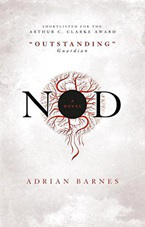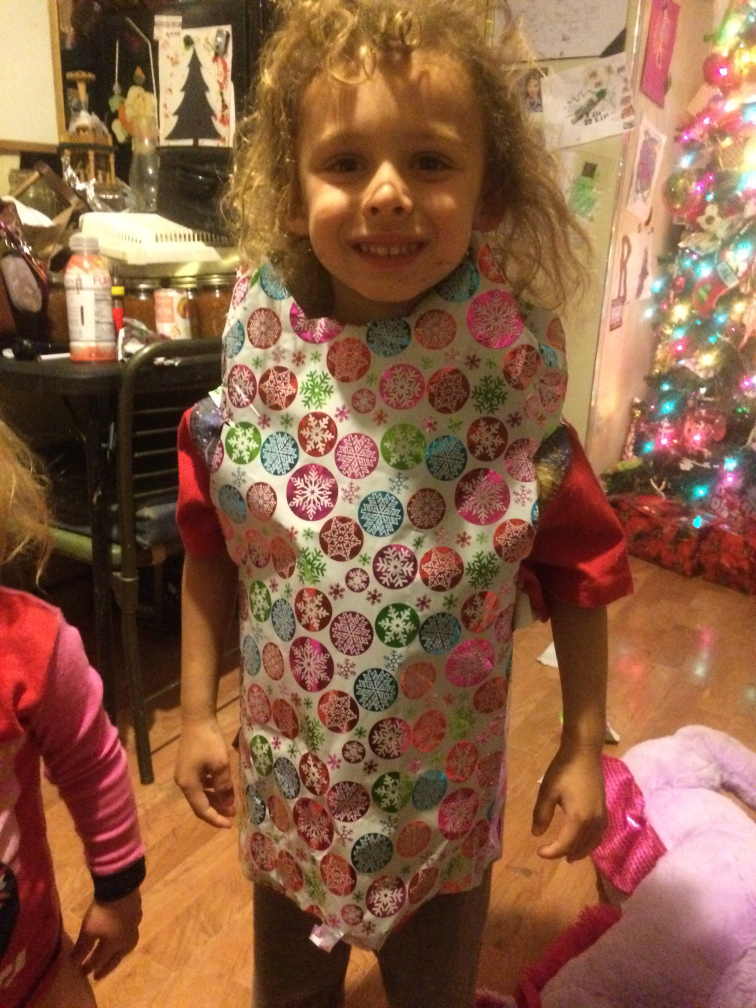Here is an icon obviously in the general form of the famous Znamenie (“Sign”) type (see https://russianicons.wordpress.com/2014/07/24/the-palladium-is-not-just-a-theater/), but it is given a sub-classification title:
АБАЛАЦКИЯ ЗНАМЕНИЕ ПРЕ[СВЯТАЯ БОГОРОДИЦА]
ABALATSKIYA ZNAMENIE PRESVYATAYA BOGORODITSA
The “Abalak ‘Sign’ Most Holy Mother of God.”
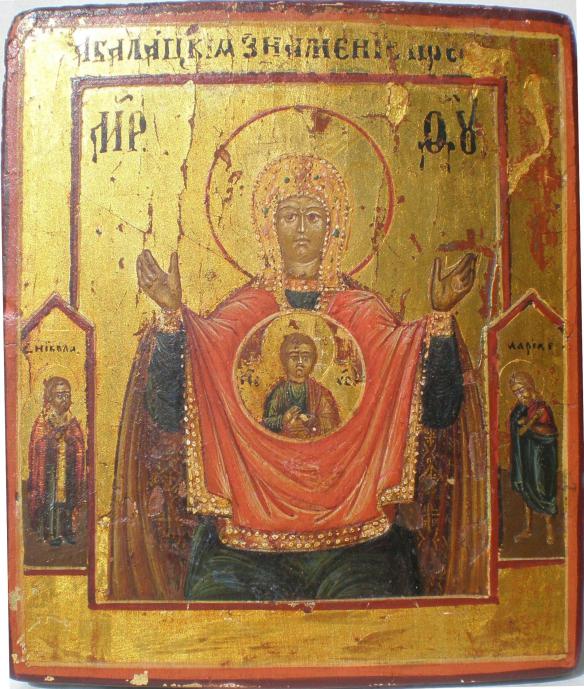
(Photo courtesy of Antonio Caldeo)
Usually when we find saints in the outer border of an icon, they are family name saints or special patron saints of those who ordered the image. But in the case of the Abalatskaya Znamenie, they are part of the icon type itself.
On the left side we see S[vyatuiy] Nikola (Nikolai/Nicholas):

At right is [Svyataya] Maria E[gipetskaya]” — Holy Mary of Egypt:
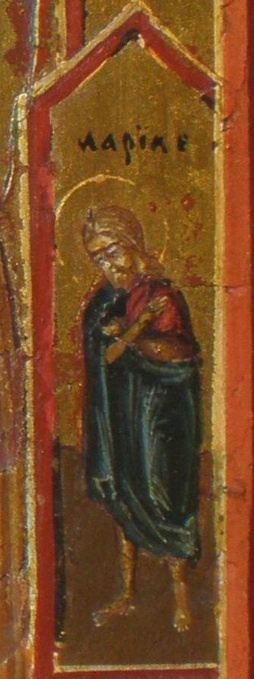
These two saints — Nikolai and Maria — are an important part of the origin story of the Abalatskaya icon, which follows the common “It came to me in a dream” motif so frequent in icon origin tales.
The story goes like this:
A bit southeast of the city of Tobolsk, lay a settlement in the Irtysh River called Abalak. You can see it in the lower right corner of this map:
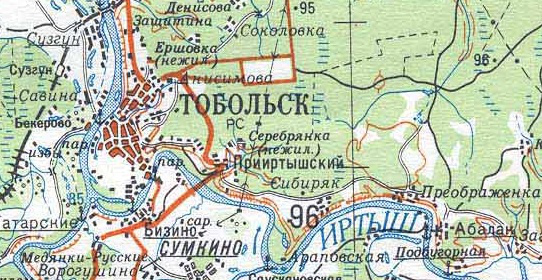 During the reign of Tsar Mikhail Fyodorovich, there lived alone in the settlement of Abalak a religious woman named Maria. On July 10th, 1636, she is said to have had a dream in which she saw the Znamenie image of Mary, and at the sides of it were St. Nicholas (of Myra) and Mary of Egypt. She heard a voice coming from the image. It told her to reveal her vision to the people, and tell them that they were to build a new wooden church in Abalak, on the right side of the old Transfiguration Church, under the name of the Znamenie icon of old Novgorod. And it was to have chapels for St. Nicholas and for Mary of Egypt.
During the reign of Tsar Mikhail Fyodorovich, there lived alone in the settlement of Abalak a religious woman named Maria. On July 10th, 1636, she is said to have had a dream in which she saw the Znamenie image of Mary, and at the sides of it were St. Nicholas (of Myra) and Mary of Egypt. She heard a voice coming from the image. It told her to reveal her vision to the people, and tell them that they were to build a new wooden church in Abalak, on the right side of the old Transfiguration Church, under the name of the Znamenie icon of old Novgorod. And it was to have chapels for St. Nicholas and for Mary of Egypt.
As these stories commonly go, Maria did not do as instructed. She was afraid she would be ridiculed.
One day not long after, Maria was walking from her hut, carrying bread in her hands, when she suddenly saw a bright light, and there was a shining cloud around her. In this new vision she saw in the air the Znamenie image, with Mary of Egypt standing by it. And in front of the image stood St. Nicholas in his bishop’s vestments.
Nicholas spoke to her, telling her again to instruct the people to cut timber and build a church. He added that if the people would not listen, they would experience the anger of God: the priest and the other parishioners would die.
Now as you already know, this motif of being told to do something in a vision or dream, but not doing as told, is common in these old stories.
Given that, it is not surprising that Maria did not do as Nicholas told her after the second vision. But then came the third. She was doing needlework in her hut when she suddenly began to smell a very fragrant odor. Then she again heard the voice of St. Nicholas. He asked her why she did not tell the people of her visions and instructions, and added that her unbelief would bring the wrath of God down on her.
Suddenly Maria felt terrible pain and both her hands began to severely cramp. She fell to the floor in anguish. But then she heard the voice of the Mother of God saying — “It is difficult; I feel sorry for her.”
With that the pain in her hands stopped. Maria, now thoroughly intimidated, hurried off to tell her spiritual father about the visions and instruction to build a church. But there comes a variation in the usual pattern: her spiritual father also hesitated to tell the people about Maria and her visions.
Fourteen days after her first vision, Maria was on her way to the city of Tobolsk. Suddenly she saw a cloud, like a giant column extending from the earth to the sky. On the column was the Znamenie image, with Mary of Egypt. And standing on the ground near Maria was a very angry St. Nicholas, who said scoldingly, “Why do you hesitate to reveal your visions and instructions to the people? If you dawdle, your whole body will be paralyzed; if you tell them and they don’t listen, not you but they will suffer!”
That did the trick. Maria was so frightened that she went and told the Archpastor Nektariy in Tobolsk of her visions and instructions. He showed her an icon of the Znamenie type, which previously she had not known. She said it was the image seen in her visions. The inhabitants of Abalak believed the tale of her visions, and so the church was built.
After the church was built, there was a man named Evfimiy who suffered a kind of paralysis. A beggar came to him, telling of the church in Abalak that had been built as the result of visions of the Znamenie icon with Nicholas and Mary of Egypt. He added that if Evfimiy were to order an icon to be painted for the new church, perhaps God would take note of this and forgive him, and heal him of his disability.
Evfimiy did as the beggar suggested, and ordered the painting of an icon of the Znamenie image, with Nicholas and Mary of Egypt added to it. The painting was done by the Protodeacon of the Sophia Church in Tobolsk, a fellow named Matfei, whose painting skill was famous throughout Siberia.
All through the painting of the icon, Evfimiy grew gradually stronger and healthier. Finally he was completely well. He then went to Matfei to get the icon, which he took to the cathedral in Tobolsk to be consecrated. After the ceremony, the icon was sent to Abalak. During its procession there, it is said to have healed the eyes of a girl in the village of Shaktalyk.
There was a terrible continuous rain in the Tobolsk region in the summer of 1665 that was ruining the crops. The new Abalak icon was brought back to Tobolsk, and after ceremonies before it in the Cathedral, the rain stopped and the sun came out. In years following it became a custom to annually bring the supposedly miraculous image from Abalak to Tobolsk in July. A monastery was built near the church in Abalak in 1783, and there the Abalak image was kept. Many copies of it were painted, some considered miraculous like the original. The monastery was closed by the Communists in 1924, and the original Abalatskaya icon disappeared.
One copy of the icon, painted in a late and very Westernized style and considered miracle-working in itself, was entrusted to a White Guard during the Russian Civil War, and was taken to Shanghai, then to Australia, where it is now kept in the Orthodox Protection Church in Cabramatta, a Sydney suburb.
In the example of the Abalatskaya type shown on this page, Mary wears a more ornate headcovering than is usual. This varies from icon to icon. In many she wears the simple, unadorned maphorion (the “hood”), but in some icons it is ornamented with pearls and jewels.
Advertisements Share this:


